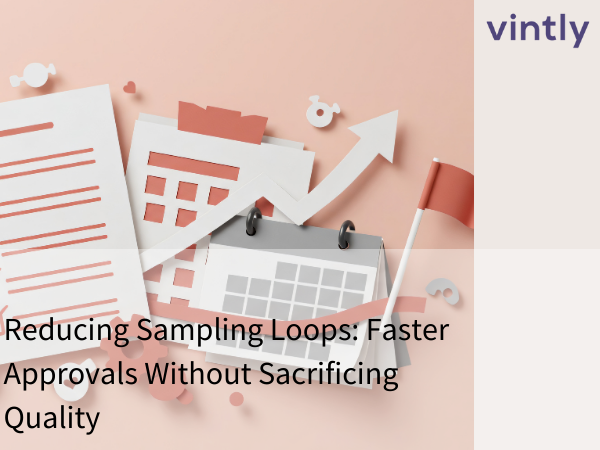The Imperative of Supply Chain Visibility
In the intricate dance of global commerce, the ability to track and understand every movement and transformation of goods from raw materials to finished products - known as supply chain visibility - is not just an advantage; it's a necessity. As businesses strive to meet the demands of an increasingly fast-paced and interconnected world, the clarity and transparency provided by comprehensive supply chain visibility have become pivotal. This article delves into the essence of supply chain visibility, its paramount importance, and practical steps for its integration into various supply chain processes and sections.
Understanding Supply Chain Visibility
At its core, supply chain visibility (SCV) is the capability to access real-time data and insights across all aspects of the supply chain. This encompasses the journey of a product from its inception as raw material through to manufacturing, warehousing, and final delivery to the customer. Effective SCV offers a panoramic view of supply chain operations, enabling businesses to anticipate disruptions, optimize processes, and make informed decisions.
The Significance of Enhanced Visibility
The benefits of achieving high levels of SCV are manifold. Enhanced visibility leads to improved coordination and collaboration among supply chain partners, resulting in increased efficiency and reduced costs. It also empowers businesses to respond swiftly to market changes and supply chain disruptions, thereby enhancing resilience and reliability. Furthermore, SCV facilitates better compliance with regulatory standards and sustainability practices, a growing concern in today's environmentally conscious market.
Implementing SCV Across Supply Chain Processes: A Deep Dive
Achieving end-to-end supply chain visibility (SCV) is no small feat, but it's an essential one for businesses looking to stay competitive in the modern marketplace. By strategically integrating advanced technologies and fostering a culture of transparency, companies can illuminate every corner of their supply chains. Let's explore how this can be done across key supply chain segments:
1. Sourcing and Procurement:
The foundation of a transparent supply chain is built during the sourcing and procurement phase. Digital platforms can revolutionize this segment by providing real-time insights into every aspect of supplier interaction. Blockchain technology stands out for its ability to offer an unalterable ledger of transactions, ensuring that every material's origin and journey can be traced back to its source. This not only enhances transparency but also builds trust among stakeholders, ensuring ethical and sustainable sourcing practices.
2. Manufacturing and Production:
The heart of the supply chain—manufacturing—can greatly benefit from the implementation of Internet of Things (IoT) devices and sensors. These technologies enable the real-time monitoring of production lines, instantly highlighting inefficiencies or deviations. This capability allows for quick adjustments, ensuring that production stays on schedule and meets quality standards, ultimately reducing waste and improving overall efficiency.
3. Warehousing and Inventory Management:
Advanced inventory management systems, powered by artificial intelligence (AI) and machine learning, can provide a crystal-clear view of inventory levels, movements, and conditions. These systems can predict future inventory needs with remarkable accuracy, automating restocking processes and reducing the likelihood of overstocking or stockouts, thereby optimizing warehouse operations.
4. Logistics and Transportation:
The movement of goods is where real-time tracking truly shines. GPS and telematics technology allow for the continuous monitoring of goods in transit, offering insights into location, condition, and estimated arrival times. When combined with predictive analytics, this information enables dynamic routing and scheduling, reducing transit times, minimizing delays, and ensuring that products arrive when and where they're needed.
5. Sales and Demand Planning:
In the realm of sales and demand planning, data analytics and AI are invaluable. These tools can dissect vast amounts of consumer data to reveal underlying trends and behaviors, leading to more accurate demand forecasting. This insight allows businesses to align their production and inventory more closely with market demand, ensuring they can meet customer needs without excess inventory.
6. Returns and Reverse Logistics:
Efficient management of returns and reverse logistics is facilitated by systems designed to track and handle returned products. Visibility in this segment helps businesses identify common reasons for returns, enhance customer satisfaction through streamlined processes, and maximize the value recovered from returned items through effective reuse or recycling practices.
Overcoming the Challenges
Embarking on the journey toward full SCV is not without its obstacles. Integrating diverse systems and safeguarding data security are significant challenges that businesses must navigate. However, the rewards—in the form of enhanced agility, competitiveness, and sustainability—far outweigh these hurdles. By committing to SCV technologies and practices, companies can not only illuminate their supply chains but also light the way to a more efficient, resilient, and customer-centric future.
The role of supply chain visibility in modern business cannot be overstated. It stands as a cornerstone of efficiency, resilience, and customer satisfaction. As companies increasingly adopt SCV practices, they pave the way for a more transparent, responsive, and sustainable future in global commerce. The journey toward complete visibility may be complex, but it is undoubtedly a worthwhile endeavor for any forward-thinking business.
.png)


